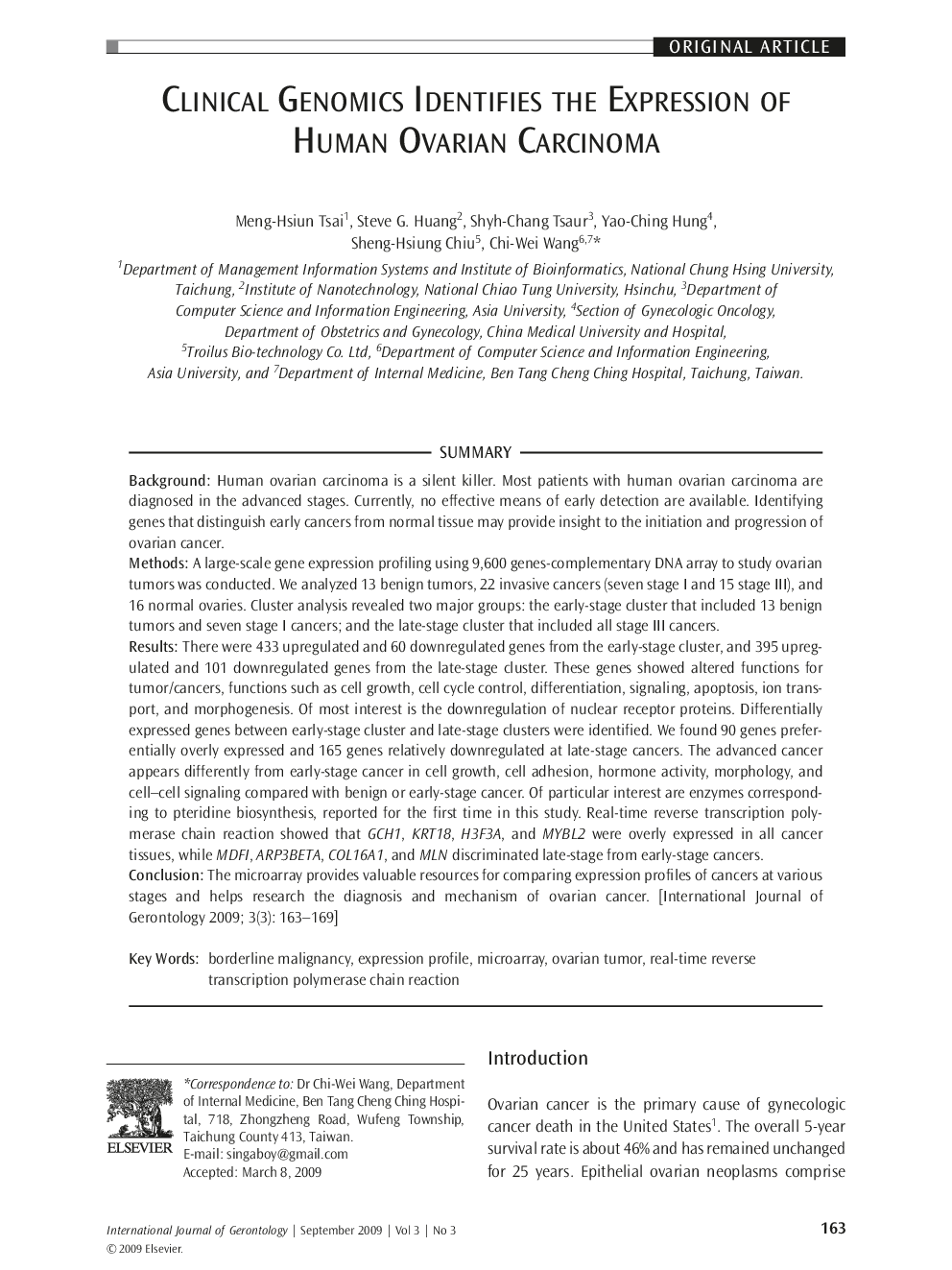| کد مقاله | کد نشریه | سال انتشار | مقاله انگلیسی | نسخه تمام متن |
|---|---|---|---|---|
| 3325577 | 1590525 | 2009 | 7 صفحه PDF | دانلود رایگان |

SummaryBackgroundHuman ovarian carcinoma is a silent killer. Most patients with human ovarian carcinoma are diagnosed in the advanced stages. Currently, no effective means of early detection are available. Identifying genes that distinguish early cancers from normal tissue may provide insight to the initiation and progression of ovarian cancer.MethodsA large-scale gene expression profiling using 9,600 genes-complementary DNA array to study ovarian tumors was conducted. We analyzed 13 benign tumors, 22 invasive cancers (seven stage I and 15 stage III), and 16 normal ovaries. Cluster analysis revealed two major groups: the early-stage cluster that included 13 benign tumors and seven stage I cancers; and the late-stage cluster that included all stage III cancers.ResultsThere were 433 upregulated and 60 downregulated genes from the early-stage cluster, and 395 upregulated and 101 downregulated genes from the late-stage cluster. These genes showed altered functions for tumor/cancers, functions such as cell growth, cell cycle control, differentiation, signaling, apoptosis, ion transport, and morphogenesis. Of most interest is the downregulation of nuclear receptor proteins. Differentially expressed genes between early-stage cluster and late-stage clusters were identified. We found 90 genes preferentially overly expressed and 165 genes relatively downregulated at late-stage cancers. The advanced cancer appears differently from early-stage cancer in cell growth, cell adhesion, hormone activity, morphology, and cell–cell signaling compared with benign or early-stage cancer. Of particular interest are enzymes corresponding to pteridine biosynthesis, reported for the first time in this study. Real-time reverse transcription polymerase chain reaction showed that GCH1, KRT18, H3F3A, and MYBL2 were overly expressed in all cancer tissues, while MDFI, ARP3BETA, COL16A1, and MLN discriminated late-stage from early-stage cancers.ConclusionThe microarray provides valuable resources for comparing expression profiles of cancers at various stages and helps research the diagnosis and mechanism of ovarian cancer.
Journal: International Journal of Gerontology - Volume 3, Issue 3, September 2009, Pages 163-169